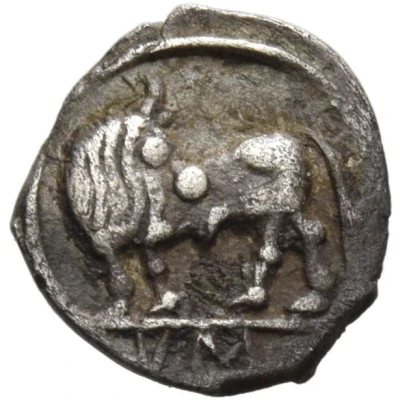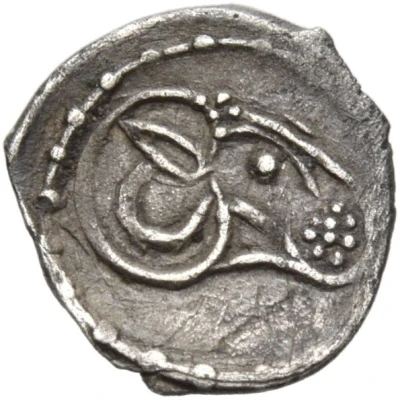


© Nomos AG
Hemiobol 550 BC - 510 BC
| Silver | 0.28 g | 10 mm |
| Issuer | Sybaris (Lucania) |
|---|---|
| Type | Standard circulation coin |
| Years | 550 BC - 510 BC |
| Value | Hemiobol (1⁄12) |
| Currency | Achaean drachm |
| Composition | Silver |
| Weight | 0.28 g |
| Diameter | 10 mm |
| Shape | Round (irregular) |
| Technique | Hammered |
| Orientation | Variable alignment ↺ |
| Demonetized | Yes |
| Updated | 2024-10-10 |
| Numista | N#396273 |
|---|---|
| Rarity index | 100% |
Reverse
Ram's head to right, shown in outline form; border of dots.
Comment
Demeester 11, otherwise unpublished. Unique, was unknown prior to its first appearance in 1994.
Interesting fact
The Hemiobol coin was used as a form of currency in the ancient Greek city of Sybaris, which was located in present-day southern Italy. The coin's design features a mythical creature called a "satyr" on one side, and an inscription of the city's name on the other. The satyr was a symbol of fertility and prosperity in ancient Greek mythology, which may have been a reflection of the city's wealth and prosperity at the time.